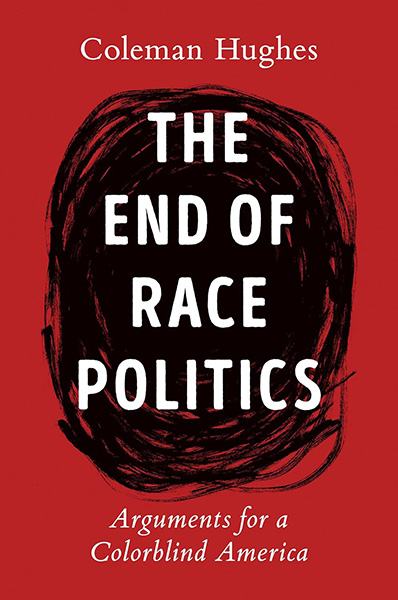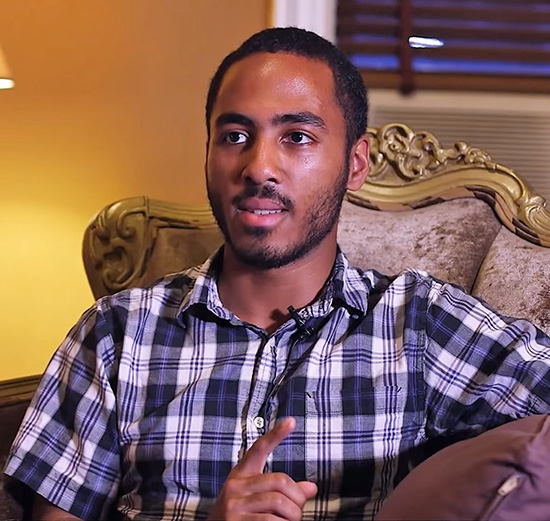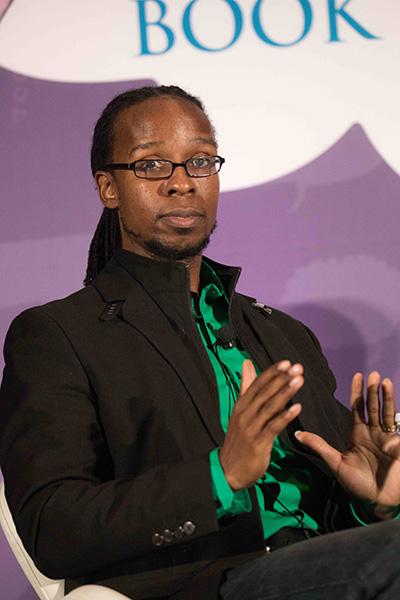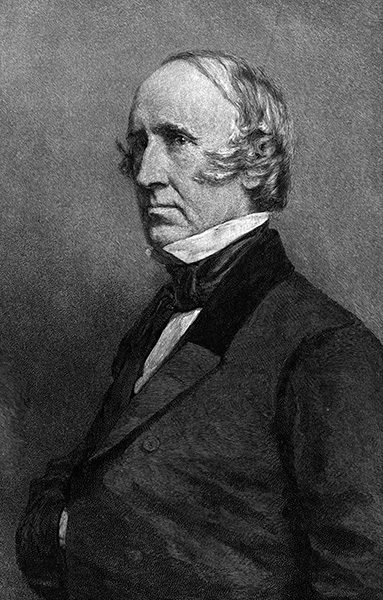Black Writer Calls for Colorblind America
Robert LaFlamme, American Renaissance, March 8, 2024

Subscribe to future audio versions of AmRen articles here.
Coleman Hughes, The End of Race Politics: Arguments for a Colorblind America, Thesis, 2024, 256 pp., $22.98 (hardcover)
Coleman Hughes is a black writer who argues persuasively that the media have deliberately made race relations worse, and his The End of Race Politics is a best-seller. It is certainly true that many Americans think things have gotten worse. As Mr. Hughes writes:
As late as 2013, a clear majority of black Americans did not think that racial discrimination was the main driver of racial disparities. . . . Prior to 2013, most blacks and whites in America thought race relations were good. . . . Then everything changes. We saw a tenfold increase in mentions of race and racism [in media and on television] — despite every indication that viewpoints about actual racism against blacks were trending downward.
By 2021, about half as many Americans thought race relations were good as thought so in 2013. Mr. Hughes argues that 2013 was the turning point in the biggest setback in American race relations in at least a generation. So, what happened?

Mr. Hughes explains that social media such as Facebook and Twitter, and traditional media such as the New York Times and the Washington Post that moved online, must attract viewers to sell advertising, and they therefore published clickbait. The media believe anti-black racism sells, so they highlight anything that can be spun in that direction.
Emotional tales of racial strife spread faster than serious discussion. For example,
When Michael Brown was killed by Darren Wilson in Ferguson in 2014, the narrative that a racist cop had killed an unarmed teenager who had his hands up spread quickly. As far as narratives go, this one tapped every psychological trigger that would lead people to share it widely: black v. white, historical grievances, violence, and so on. The fact check of this event — that Michael Brown did not have his hands up, had physically overpowered the officer, punched him, and tried to steal his gun — traveled slowly because it appealed more to reason than to outrage. . . . To this day, “Hands Up, Don’t Shoot” remains one of the most popular slogans at Black Lives Matter protests.
Many still believe this even though the Washington Post apologized for spreading the lie and even gave the story four Pinocchio’s. People hoped social media would spread good information. It doesn’t: “For instance, 54 percent of ‘very liberal’ Americans — the section of the population most active on social media — believe that over one thousand unarmed black men were killed by cops in 2019. The actual number was twelve.”
Mr. Hughes writes that where he grew up, race was irrelevant:
I didn’t think of them [his friends] as “black, “white,” “Hispanic,” and mixed race.” I thought of them as Rodney, Stephen, Javier, and Jordan. . . . Where I grew up in Montclair, New Jersey, racists existed, but they were the exceedingly rare exceptions that proved the overwhelming rule. . . .
When I was sixteen, the higher-ups at Newark Academy offered me a chance to attend a three-day event in Houston called the People of Color Conference. . . . Though I wouldn’t have known to call it this at the time, the conference was essentially a three-day critical race theory and intersectionality workshop. It was there that I first heard terms like systemic racism, safe space, white privilege, and internalized oppression — terms that were fringe in 2012 but would sweep through the elite universities just a few years later . . . . I had never been immersed in a subculture where my race was considered to be important. . . .
During orientation week at Columbia [University], we were asked to divide ourselves up by race and discuss how we either participated in, or suffered from, systemic oppression. . . . I felt acutely aware of my blackness. . . . I worried that rather than approach me as a blank slate, these students would approach me as a black man, and by implication, as a victim. . . .

Coleman Hughes. Credit: Rebel Wisdom, CC BY 3.0, via Wikimedia Commons
Mr. Hughes kept wondering why students in the most non-racist environment on earth claimed to experience racism every day. Why were they more pessimistic than his grandparents who had lived through segregation? . . .
I became convinced that then new race obsession that brands itself “anti-racist” is in fact the opposite. . . . Taken to their logical endpoints, the ideas I encountered first at the POC Conference and then at Columbia pave the way toward a social and political hellscape where skin color — a meaningless trait — is given supreme importance. . . .
Since the civil rights movement, a majority of Americans have agreed that discriminating against somebody because of their race is morally unacceptable. [Ibram X] Kendi disagrees. He believes that certain kinds of racial discrimination are good and necessary: “The only remedy to racist discrimination is antiracist discrimination. The only remedy for past discrimination is present discrimination. The only remedy to present discrimination is future discrimination.”
Mr. Hughes writes that instead of trying to end racial resentment and discrimination, people he calls “neoracists,” such as Mr. Kendi, want to start discriminating against new groups of people.
Neoracists don’t want racial peace, but endless ideological war. When we see neoracism for what it is — racism in anti-racist clothing — we see why neoracists fail to support colorblind policies that would actually eliminate racism, and why they reject the colorblind principles that motivated the civil rights movement. . . . Racial strife is what fuels the neoracist industry.

Ibram X. Kendi (Credit Image: © Jeff Malet/Newscom via ZUMA Press)
No, “neoracists” don’t want “endless ideological war.” They want to win the war, and enjoy the privileges and power that come from hectoring and exploiting whites.
As for race itself, Mr. Hughes writes that weight and length are natural, whereas a seven-day week doesn’t exist in nature; it’s a pure social construct. Race, he says, falls in between. It’s a social construct inspired by visible “racial” differences. The “social construct” can give strange results. Barack Obama had a black father and a white mother. Why do we call him black instead of white? What is a white Hispanic? Mr. Hughes writes that “it was the Carter administration that finally decided on the canonical list of five categories that we use today: Black, Hispanic, White, Asian/Pacific Islander, Native American/Alaska Native.
Mr. Hughes writes of a poor Hmong student who applied for a fellowship for groups underrepresented in science. She was rejected because Hmong are “Asians,” who are overrepresented. It makes no sense to lump Hmong and Tongans in with “Asians:”
Top-earning Asians [in the top decile] earn 10.7 times as much as the lowest-earning Asians. By comparison, the top-earning blacks earn 9.8 times as much as the lowest-earning blacks, and the top earning whites and Hispanics earn 7.8 times as much as the lowest-earning whites and Hispanics.
Mr. Hughes writes that slavery, Jim Crow, and neoracist policies show that we can’t trust government with the power to enact racial policies. He says income is a better way to determine whom to help. He also writes that the civil rights movement began shortly after the Civil War. Wendell Phillips and Frederick Douglass believed that the abolition movement had to continue until black Americans had equal rights across the board:
For nine months, he [Phillips] included the following post in every edition of the ASA’s [American Anti-Slavery Society] weekly newspaper: “Proposed amendment of the United States Constitution: No state shall make any distinction in civil rights or privileges among the naturalized citizens of the United States residing within its limits, or among persons born on its soil of parents permanently residing there, on account of race, color, or descent.”. . .
[What was instead ratified] was the version of the Fourteenth Amendment that we have today — an amendment that guarantees only “equal protection.” The stronger colorblind version of the amendment proposed by Phillips would have ruled out the very idea of “separate but equal” institutions. The weaker version that was actually ratified enabled the emergence of Jim Crow laws.

Wendell Phillips (Credit Image: © Mary Evans via ZUMA Press)
The biggest legal blow to Jim Crow came in 1954 with Brown v. Board of Education. Thurgood Marshall’s opening argument to the Supreme Court was: “The Fourteenth Amendment precludes a state from imposing distinctions or classifications based upon race and color alone. The State of Kansas has no power thereunder to use race as a factor in affording educational opportunities to its citizens.”
The Court righty rejected Marshall’s fanciful Fourteenth Amendment argument — the very Congress that passed the amendment set up segregated schools in the District of Columbia. Instead, the Court struck down school segregation on the novel, non-legal theory that it was “inherently unequal.” Mr. Hughes thinks the Court should have accepted Marshall’s phony 14th Amendment argument and writes that this would have made the civil-rights struggle for a colorblind society unnecessary. Mr. Hughes cites fine-sounding sentiment:
Many of our most celebrated anti-racist heroes believed that reverse racism was real and was a cause for concern. . . . Dr. King, for instance, said that “black supremacy would be equally evil as white supremacy,” and that “the cry ‘Black Power’ whether they mean it or not, falls on the ear as racism in reverse.” Roy Wilkins, the executive director of the NAACP, was even more critical. He called the Black Power movement, “a reverse Mississippi, a reverse Hitler, a reverse Ku Klux Klan.”
Mr. Hughes continues:
The civil rights movement fought against all kinds of racial stereotyping. It fought against any kind of race thinking that discouraged us from seeing other people as individual human beings . . . Civil rights leaders saw race thinking as dehumanizing . . . Think again of Dr. King: “the important thing about a man is ‘not his specificity but his fundamentum,’ not the texture of his hair or the color of his skin but the quality of his soul. Properly speaking, races do not marry, individuals marry.”
Martin Luther King wasn’t colorblind. He wanted special treatment for blacks.
Mr. Hughes says neoracists betrayed the civil rights movement by asserting that people of color are morally superior to whites. He continues:
Consider Ibram X. Kendi’s axiom: “when I see racial disparities, I see racism.” . . . The white suicide rate in the United States is more than twice as high as the black rate or the Hispanic rate. According to Kendi’s logic, this racial disparity in suicide rates must be evidence of systemic racism . . . against white people. [emphasis in the original]
Derrick Bell, Harvard Law’s first black tenured professor, is sometimes called the godfather of Critical Race Theory. He explored what it would mean to understand racism as a permanent feature of American life and even argued that it was easier to pass civil rights legislation in the United States because it ultimately served the interests of white people. Neoracism, driven by Dr. Bell’s CRT, is reintroducing segregation.
The National Association of Scholars . . . surveyed 173 four-year colleges and universities across the country and found that 43 percent offered racially segregated dorms, 46 percent had racially segregated student orientation programs, and 72 percent had racially segregated graduation ceremonies.
Mr. Hughes then makes an entirely fair-minded reference to Jared Taylor:
[T]he policies that are now in place at many elite colleges and universities line up with the segregationist agenda of white nationalists.
Jared Taylor, for instance, is a white nationalist who celebrates white race consciousness and race thinking at large. He thinks that the experiment of having an integrated multiracial society has failed. When races live together, he thinks, they will inevitably come into conflict — too much conflict for racial intermingling to be worth the trouble:
“The persistence of black racial consciousness in the face of sincere white efforts to practice race-blindness and even preferential treatment for minorities is the single greatest failure of racial liberalism, and the most certain sign that those who have promoted it do not understand human nature or the world in which we live. It is only a matter of time: Black racial consciousness — together with Hispanic and, to a lesser extent Asian consciousness — is reawakening white racial consciousness.”
Taylor’s embrace of racial tribalism should seem regressive to anyone who’s supported the goals of the civil rights movement. Yet many elite colleges and universities embrace reasoning similar to Taylor’s: the experiment of having an integrated multiracial student body has failed, they think. We need to protect students from racial conflict, which is the inevitable result of interracial contact. The only solution is to have racially segregated options for students of color – “safe spaces” where white people can’t hurt them.
Segregation and “safe spaces” are ironic because the whole point of “diversity” was to expose students to people of different groups. At the same time, “diversity” means lowering standards to recruit blacks and easier grading to keep them from flunking out.
Thomas Sowell wrote:
The double standard of grades and degrees is an open secret on many campuses, and it is only a matter of time before it is an open secret among employers as well. The market can be ruthless in devaluing degrees that do not mean what they say. It should be apparent to anyone not blinded by his own nobility that it also devalues the student in his own eyes.” [emphasis added]
When plagiarism by the black president of Harvard came to light, early admissions applications dropped 17 percent. Students realized that employers would value their degrees less.
Victimhood is permanent. If you went to a specialist for help getting over trauma, you’d want him to help you put it behind you and get on with life. Neoracists say that being a victim is inherent because of color. This is not a recipe for a fulfilling life. It treats black people as emotionally fragile, almost like children. Is this how they want to be seen?
Neoracist promotion of permanent black oppression by permanent, incurable white racism has done obvious damage to our society. The original civil rights dream was that race consciousness would fade away as Mr. Hughes says it had in Montclair, New Jersey, where he grew up. Neoracism makes everything about race.
Mr. Hughes doesn’t write about how profitable “anti-racism” can be. Mr. Kendi not only got an $800,000 “genius” grant; he was named head of the Boston University Center for Antiracist Research which was funded with more than $50 million, with $30 million in an endowment. Antiracism must do its work forever.
The Florida State University System spent $34.5 million on diversity and it’s estimated that overall 2020 spending on DEI was $7.5 billion and projected to more than double to $15.4 billion by 2026. With such rich rewards offered to both media and scam artists, is it any surprise that DEI endures?
Neoracists are serious about protecting their DEI income. Harvard economics professor Roland Fryer, who became the youngest tenured black professor at Harvard at age 30, found that police were 23.8 percent less likely to shoot at blacks and 8.5 percent less likely to shoot at Hispanics than they were to shoot at whites. Fox News notes:
After the report was published, Fryer lived under police protection for over a month. He had a seven-day-old daughter at the time and went shopping for diapers. . . . “I was going to the grocery store to get diapers with the armed guard. It was crazy. It was really, truly crazy,” he said.
Claudine Gay, who was later forced out as Harvard president because of plagiarism in her few published papers, claimed that Prof. Fryer behaved badly with colleagues and suspended him for two years on claims of sexual harassment.
Mr. Hughes ends with an expression of hope:
I will argue that colorblindness is the wisest principle by which to govern our fragile experiment in multiethnic democracy. My hope is that people will think more clearly about the long-run consequences of race-thinking and race-based policy, restore our faith in the guiding principle of colorblindness, and pave a constructive path forward in our national conversation on race.
No chance. First, the Founders had no intention of starting a “fragile experiment in multiethnic democracy.” They set up a nation for white people, and the more far-sighted among them wanted to correct the horrible mistake of bringing blacks to America by “colonizing” them.
Second, non-whites — especially blacks — will not change what they think about whites and America. Even a remotely manageable accommodation would require that they accept the reality of racial differences in ability, and even that would still be a “fragile experiment” with no value for whites.
It is well that a few blacks point out the absurdities of current thinking about race, but those absurdities are required by egalitarian fantasy. “Conservatives” who, themselves, dare not think straight about race will certainly heap praise and gratitude on writers such as Mr. Hughes, but the only “constructive path forward in our national conversation on race” will be about voluntary separation.















